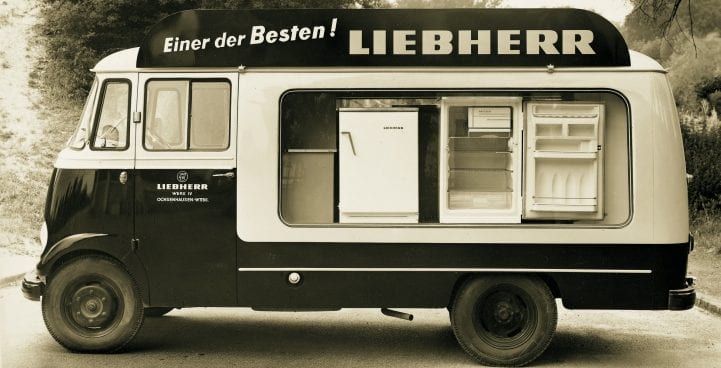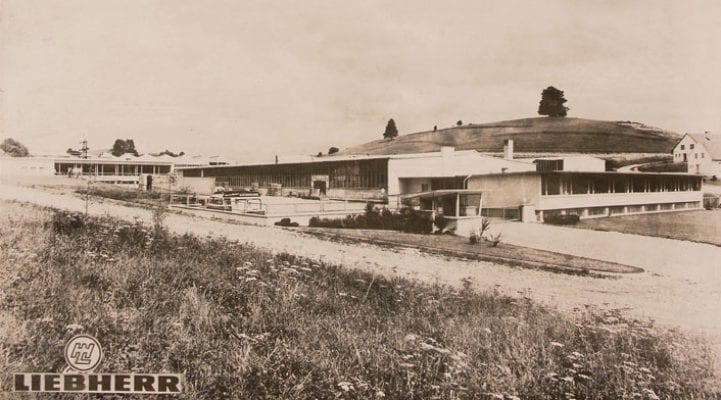
Once a genuine luxury, now an indispensable standard: The ability to cool food in a refrigerator or freezer, keeping it fresh for an extended period of time.
Read on to find out how this all came to be.
‘Once upon a time…’ is a well-known fairy tale opening that could easily be used to start the story of the refrigerator. Do you know how people stopped food from perishing 100 years ago? Or even before that, when there were no refrigerators and freezers as we know them today?
So let’s begin this tale: Once upon a time…
…going a long way back to the days of the hunter-gatherers, any food that was hunted or gathered was eaten straight away. The idea of cooling food was a long way off. Our ancestors gradually gave up their nomadic lifestyle and stopped being on the ‘hunt’ for food, so the situation started to change. As people settled, they had to find ways of keeping food fresh. They started to develop a range of solutions including smoking, curing and pickling foods. In the Middle Ages, niches in wooden walls provided a certain degree of coolness for food storage, as did streams, ponds, and holes dug in the ground. A cool cellar was an ideal place to keep perishable food fresh for longer. Foods were stored in wooden or clay containers.
Development of the Refrigerator
In 1748, William Cullen gave the first ever demonstration of artificial cooling at the University of Glasgow. The chemical refrigerator was developed and brought to the commercial market in 1834. Ferdinand Carré made further refinements in 1859. However, refrigerators were far away from being a standard feature in private homes. People stored food in a simple wooden crate containing blocks of ice and insulation materials. This explains the origin of the term ‘ice box’, which we still use today to refer to refrigerators. Along came Carl von Linde. His Gesellschaft für Lindes Eismaschinen AG (Linde’s Ice Machine Company) played a key role in the development of refrigerators from the 1870s onwards. Later technical and chemical advances saw refrigerators become a standard feature in American private households by the 1930s.
Refrigerators Save People Time
In Germany, refrigerators remained a genuine luxury item for many years to come. They were too expensive and bulky for the average household. Many households didn’t even have electricity at that time. Many villages and communities relied on communal cooling houses where fruit, vegetables, meat and other types of food could be stored. This was quite simply much cheaper. It wasn’t until the 1950s that refrigerators really took off in Germany. They eliminated the need for hours of pre-cooking and daily trips to the shops. Soon, refrigerators were being referred to as ‘every woman’s best friend’. There’s no doubt these ‘new friends’ offered a few advantages to men as well…
Meals instantly became far more varied. Cream cakes, cold cuts, fruit and other tasty delights were now all being enjoyed in the days of post-war ‘Wirtschaftswunder’ Germany.
Liebherr Enters the Refrigeration Sector

The early days of refrigerator production at Liebherr. The Ochsenhausen plant in 1959.
The first Liebherr refrigerator was produced in 1954. At this time, despite the economic miracle, 90% of German households didn’t own an electric refrigerator. Company founder Hans Liebherr saw an opportunity to enter the sector by developing, manufacturing, and continually improving, quality appliances. By the 1970s, refrigerators had become a standard and integral part of the home. First came freestanding, individual appliances. Then built-in models were gradually introduced to the market, and combination fridge-freezers became available. As the years went by, Liebherr became a well-known refrigeration specialist, continually developing new technology and innovations in the refrigeration and freezing sector. NoFrost technology, launched in 1987, is a prime example. NoFrost prevents the inside of the freezer compartment from frosting over. With its introduction, arduous and time-consuming defrosting became a thing of the past.
Added Convenience Thanks to NoFrost and BioFresh Technology
After NoFrost came BioFresh technology. Patented by Liebherr in 1996, a near 32°F zone incorporated in the refrigerator guarantees even greater freshness and convenience. Appliances with BioFresh technology offer the opportunity to keep fruit, vegetables, fish, meat and dairy products fresher for much longer than had previously been possible. Different types of food have different temperature and humidity requirements. These need to be met if the food’s flavor, vitamin content, texture and appearance are to be retained. BioFresh technology provides just the right conditions to prolong optimum storage. For example, a lettuce will stay fresh for 13 days in a Liebherr BioFresh compartment but for only 5 days in a normal refrigerator compartment.
Over the years, Liebherr also developed into an industry-leader in the fields of design and energy efficiency. By employing environmentally friendly refrigerants, highly efficient compressors and new insulation materials, Liebherr earned the coveted ENERGY STAR “Most Efficient” designation for 2016. It’s the sixth year in a row that various Liebherr models have received this honorable distinction.
The Growing Importance of Design

The Liebherr Side-by-Side-Model SBSbs 7263 received the coveted iF Design Award 2015.
Since 2010, all appliances in Europe have to be labelled with a standardized energy label. Containing information about product energy consumption, the labels show consumers at a glance how much energy an appliance consumes. The more + signs after a letter, the more energy efficient the appliance. A++ appliances are 21% more energy efficient than A+ appliances, and A+++ appliances are as much as 48% more energy efficient. Liebherr is setting the bar even higher with a model which is around 20% more energy efficient than the A+++ standard threshold, consuming only 130-kilowatt hours of electricity per year (kWh/p.a.).
Let’s not forget the ‘small’ matter of design: Liebherr appliances regularly win design accolades from independent awarding bodies. In January this year, the BlackSteel Side-By-Side 7263 received the prestigious iF Design Award 2015.
The ‘normal’ refrigerator has evolved a great deal. It is more than just an appliance for cooling food. Refrigerators have been gradually transforming from purely functional items into design centerpieces. The trend has been for modern kitchens to become open ‘communication zones’. As a result, freestanding appliances with stylishly attractive finishes (such as BlackSteel or stainless steel) and design-enhancing technologies (such as energy-efficient LED interior light columns) have become design objects and visual highlights in the kitchen.
So where will we go next? How do you think refrigerators will develop in the future? Will they help us to manage our supermarket visits by giving us warnings when we are running low on things – and reorder for us? Whatever happens: The refrigerator’s journey is far from over and plenty of adventures still await! One thing is certain: Development won’t stop and Liebherr will keep supplying you with innovative, high-quality appliances meeting all your refrigeration needs.
Do you have any questions or comments about this post? Or do you have a story to tell about the history of refrigeration? Please let us know. Contact us on Facebook or use the comment function at the bottom of this post.